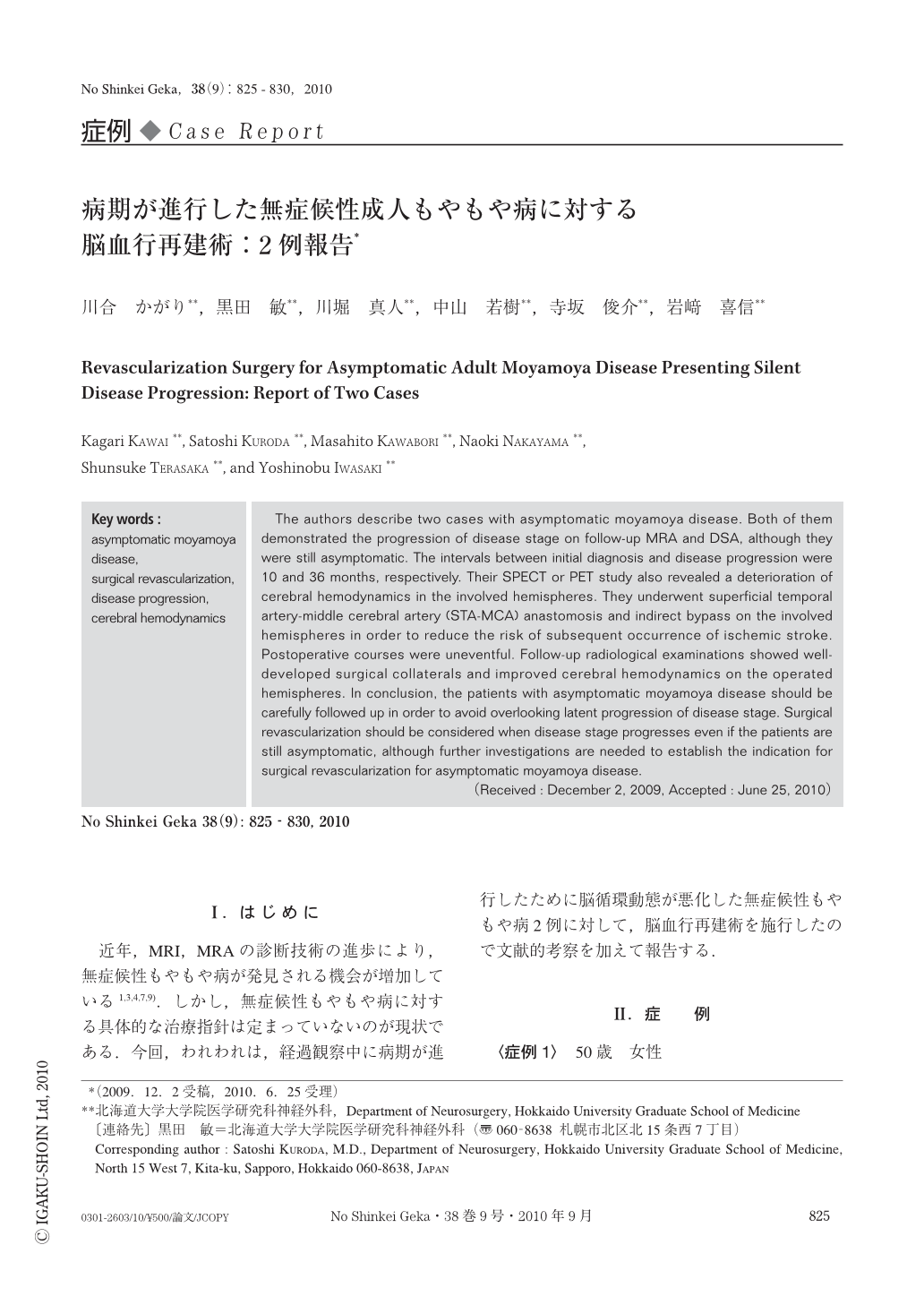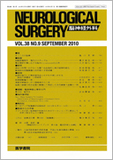Japanese
English
- 有料閲覧
- Abstract 文献概要
- 1ページ目 Look Inside
- 参考文献 Reference
Ⅰ.は じ め に
近年,MRI,MRAの診断技術の進歩により,無症候性もやもや病が発見される機会が増加している1,3,4,7,9).しかし,無症候性もやもや病に対する具体的な治療指針は定まっていないのが現状である.今回,われわれは,経過観察中に病期が進行したために脳循環動態が悪化した無症候性もやもや病2例に対して,脳血行再建術を施行したので文献的考察を加えて報告する.
The authors describe two cases with asymptomatic moyamoya disease. Both of them demonstrated the progression of disease stage on follow-up MRA and DSA, although they were still asymptomatic. The intervals between initial diagnosis and disease progression were 10 and 36 months, respectively. Their SPECT or PET study also revealed a deterioration of cerebral hemodynamics in the involved hemispheres. They underwent superficial temporal artery-middle cerebral artery (STA-MCA) anastomosis and indirect bypass on the involved hemispheres in order to reduce the risk of subsequent occurrence of ischemic stroke. Postoperative courses were uneventful. Follow-up radiological examinations showed well-developed surgical collaterals and improved cerebral hemodynamics on the operated hemispheres. In conclusion, the patients with asymptomatic moyamoya disease should be carefully followed up in order to avoid overlooking latent progression of disease stage. Surgical revascularization should be considered when disease stage progresses even if the patients are still asymptomatic, although further investigations are needed to establish the indication for surgical revascularization for asymptomatic moyamoya disease.

Copyright © 2010, Igaku-Shoin Ltd. All rights reserved.


